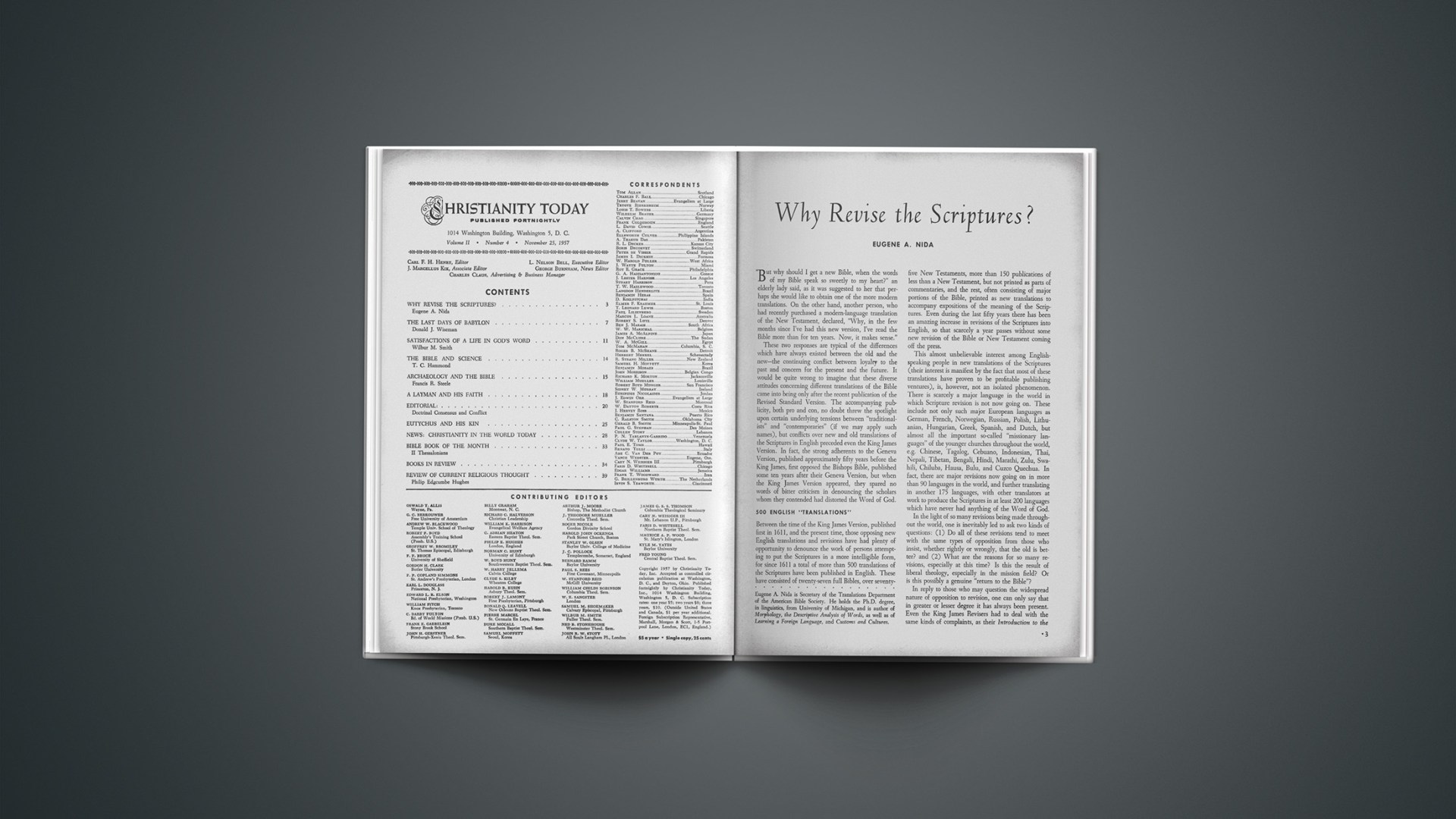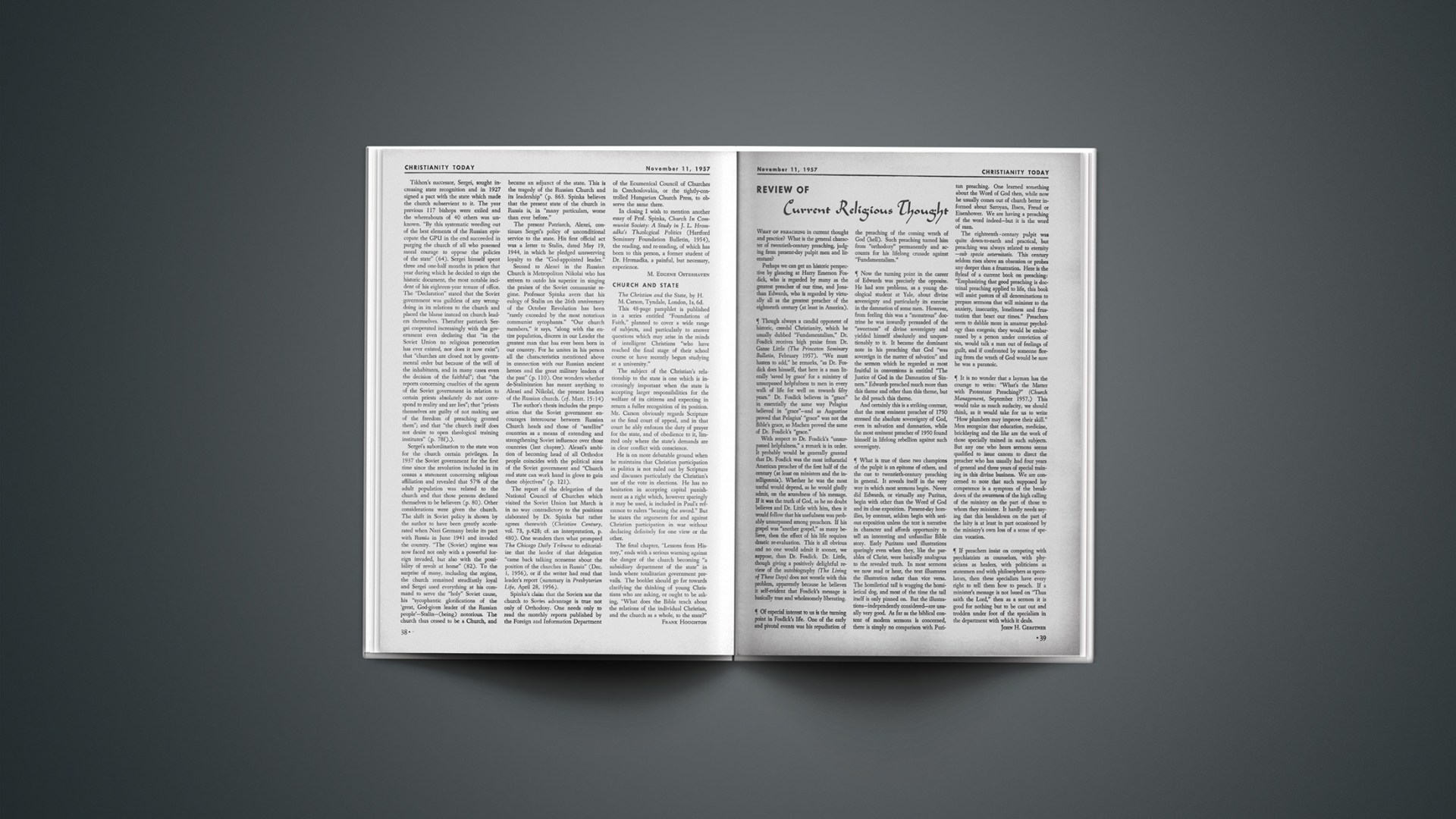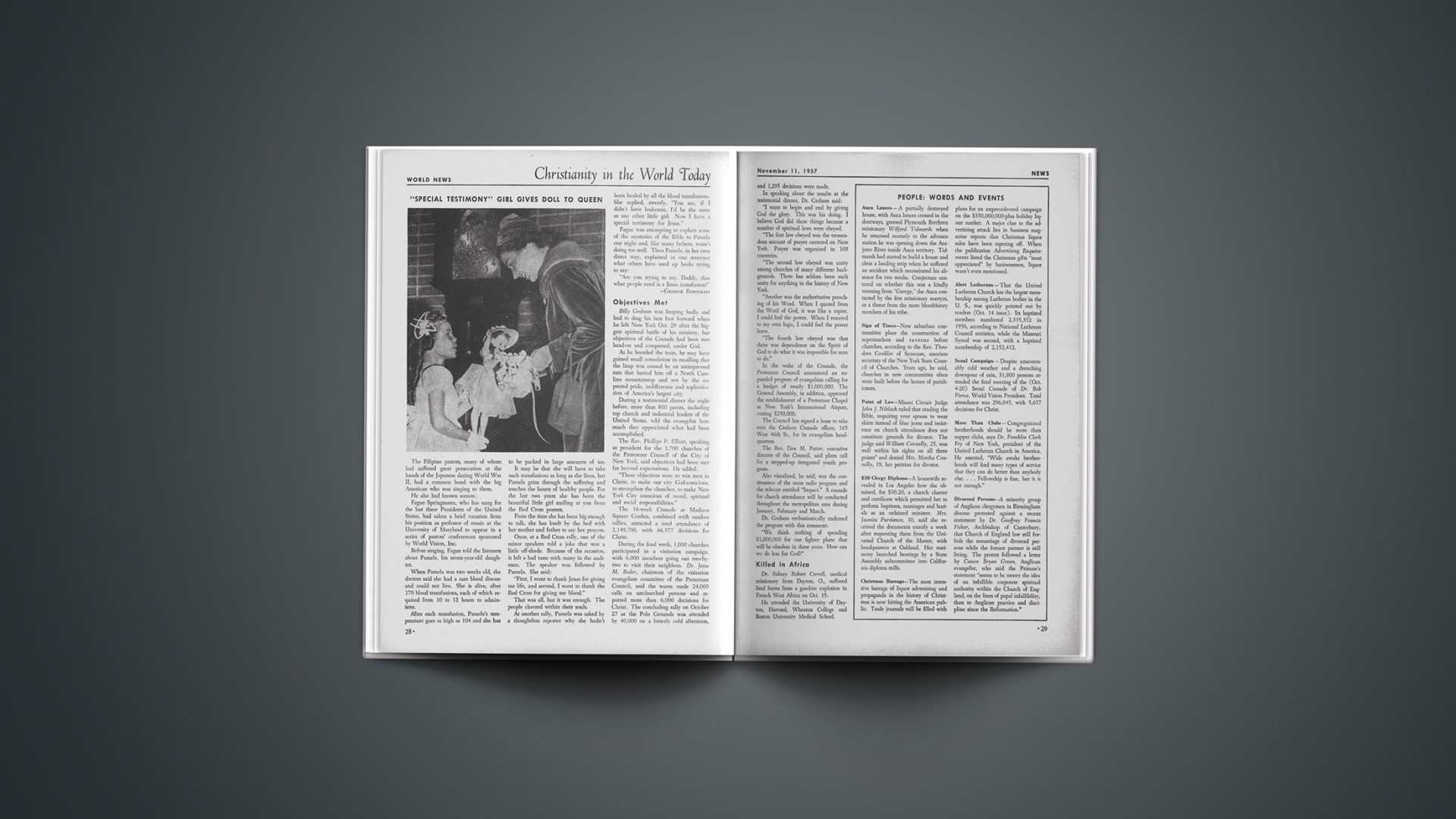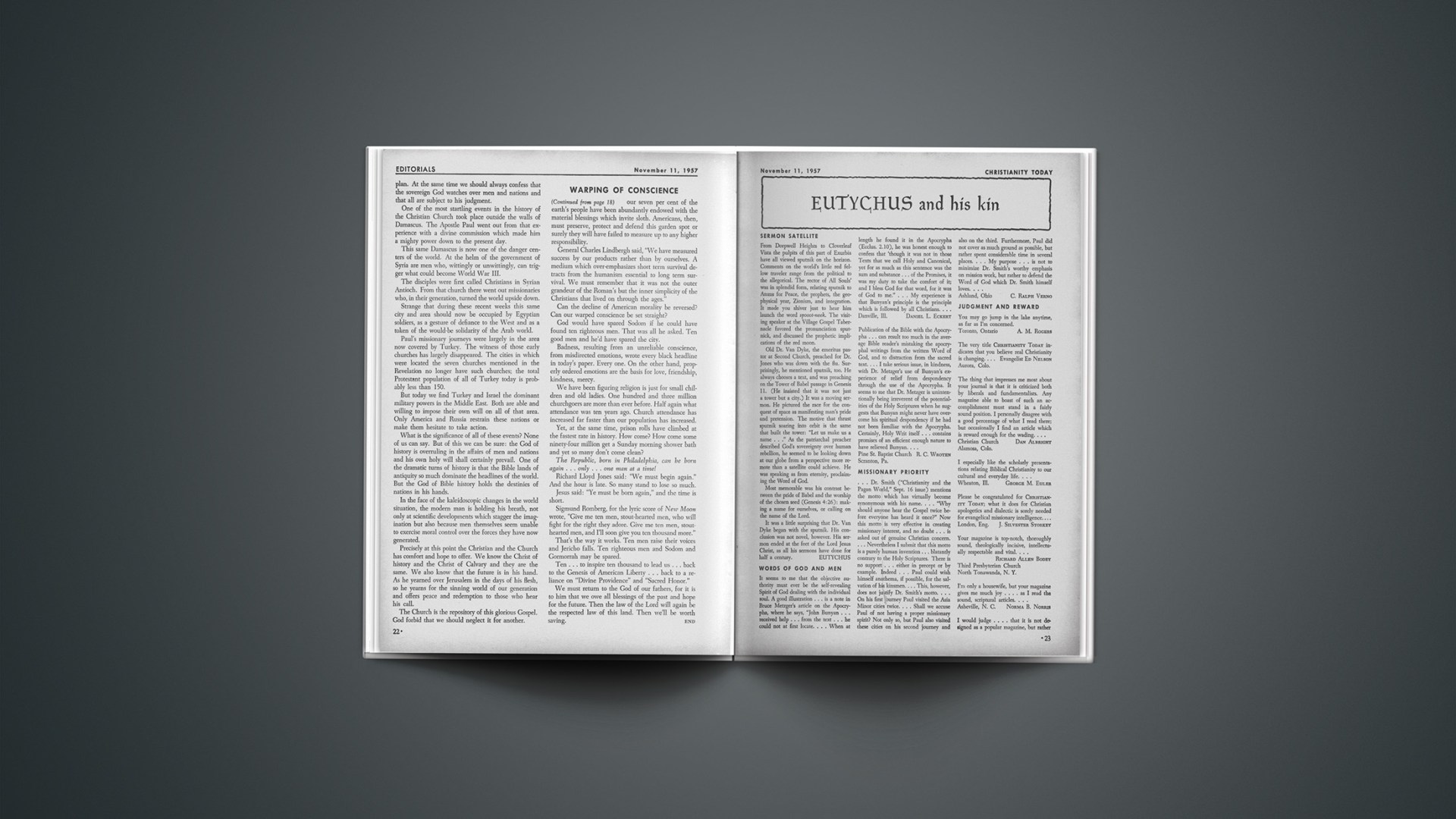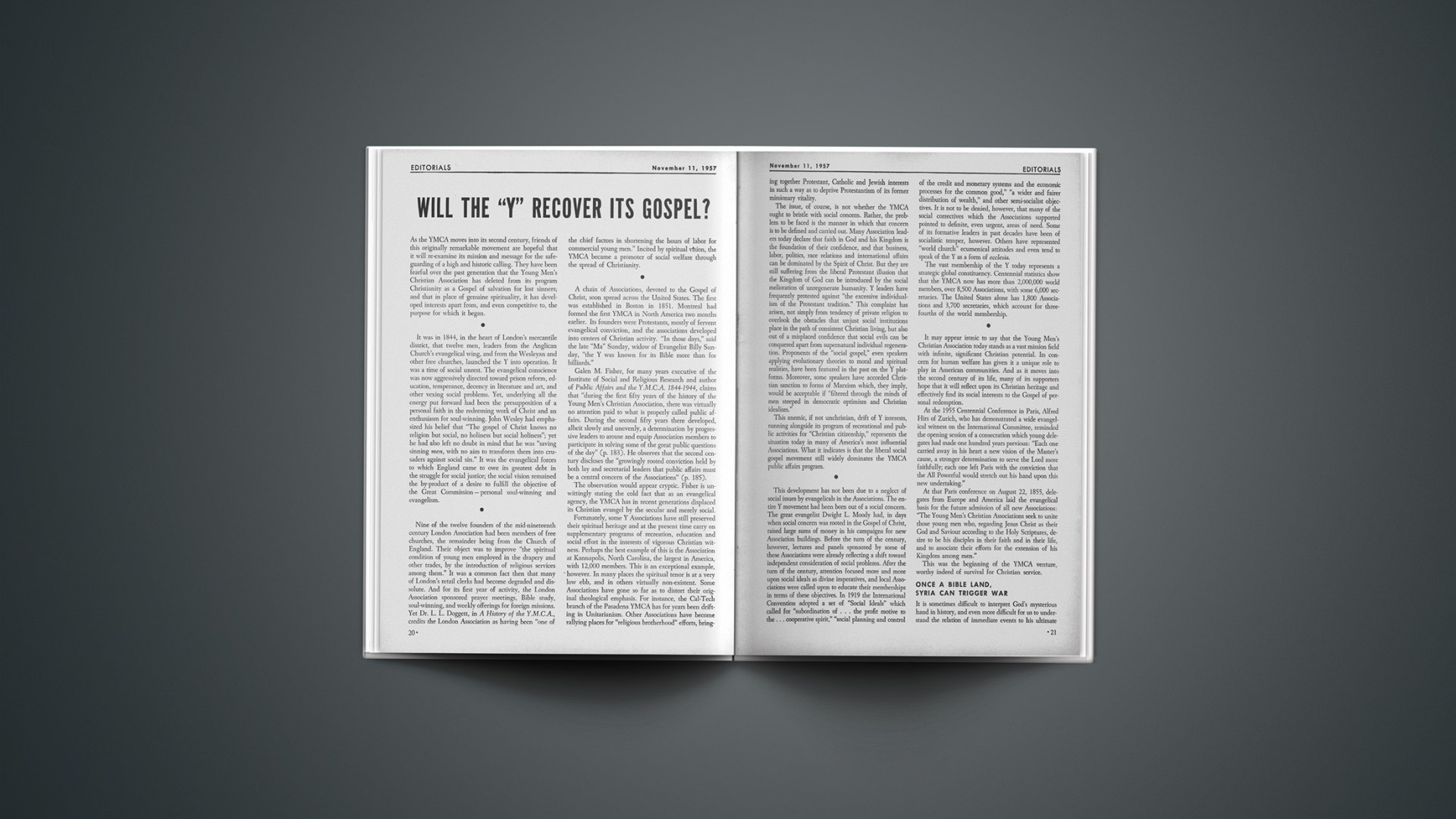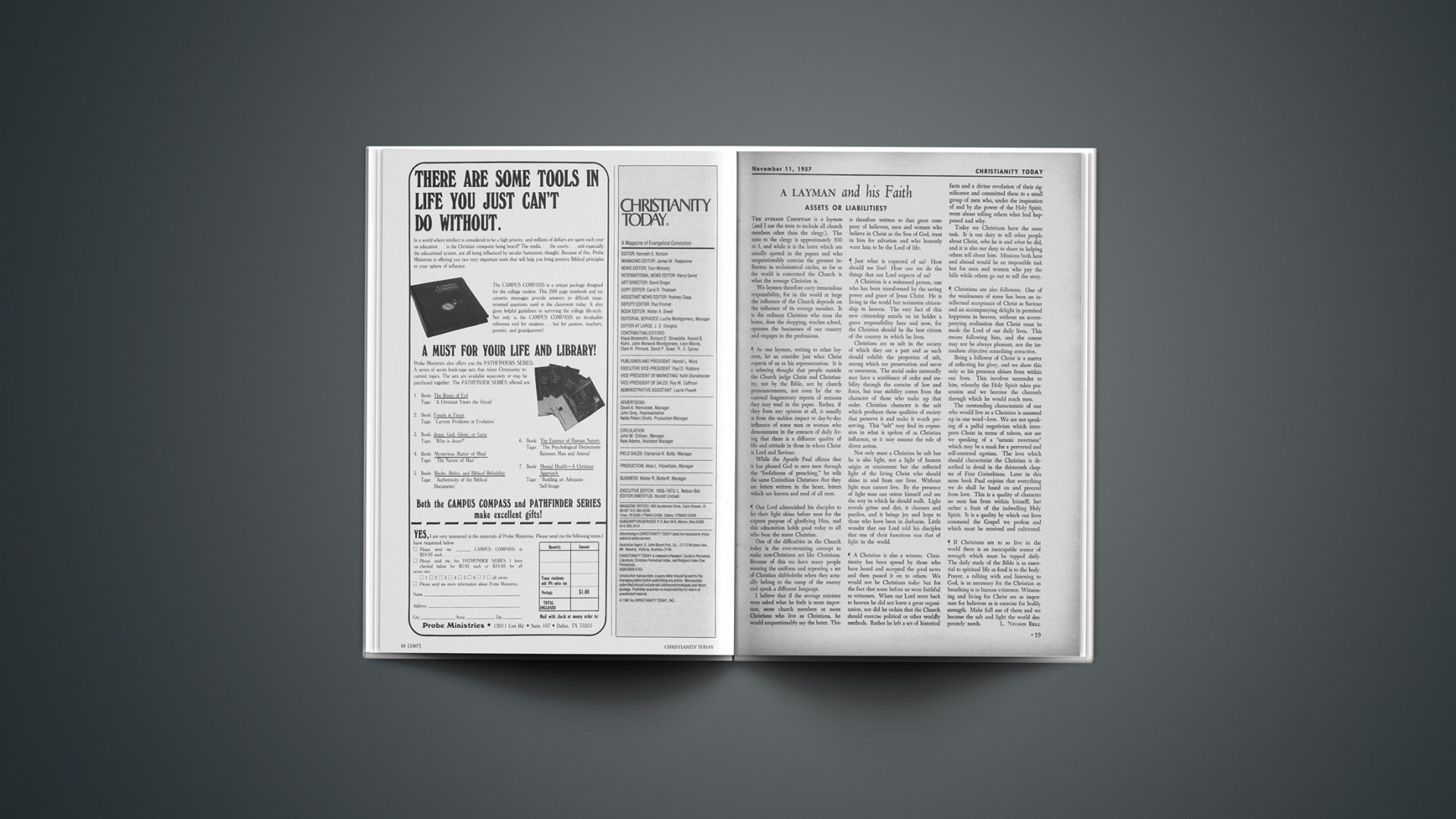What we know about Babylonia is mostly derived from clay tablets. Tens of thousands of these cuneiform texts have been found in the last century and for some periods these tell us a great deal about the inhabitants of the lower Tigris and Euphrates river valleys, about their religion, customs and business affairs. But as yet comparatively few of these texts are historical in the more direct sense of the term.
By a curious coincidence a number of texts that are historical have come to light in recent months, all relating to a comparatively short period of some seventy years—from about 609 to 539 B.C. Between these dates, as it happens, lies the last period of Babylonian greatness. In 612 Nineveh, the ancient capital of Assyria, was taken by the Medes and Babylonians and the latter inherited the former Assyrian empire; Babylon now ruled all Mesopotamia, Syria, Palestine and, for a brief while, perhaps part of Egypt itself; Jerusalem fell and the Jews were carried off to exile. At the end of these 70 years, in 539, Babylon fell in her turn. She was taken by the Persians under Cyrus.
Although many of these happenings are known from the Bible or from classical writers such as Josephus and Herodotus, we have had few contemporary Babylonian records. Take the Battle of Carchemish, early or in our period; it was at Carchemish that Babylon won Syria and Palestine from Egypt, and its sequel was the capture of Jerusalem nine years later. Until now great events such as these have been known only from the Old Testament and Josephus (who often derived his history from the Old Testament) and their dates and many details have been lacking. The history of Egypt at this time is almost a blank and the doings of even major Babylonian kings like Nebuchadnezzar have had to be reconstructed from a few building inscriptions supplemented by later classical allusions. Scarcely anything is known of the Medes, the northeastern neighbors of the Babylonians, as they pushed their frontier north and westwards to the Halys River. The clash between the two great powers in Asia Minor—the Medes and Lydians—remains a history to be read only in Greek literature. It was of obvious importance that we should find contemporary documents to explain the relationship of the Babylonians with these peoples.
The Babylonian Chronicle
At last, in 1923, two clay tablets were found of the class commonly known as the Babylonian Chronicle. They described the combined Medo-Babylonian sack of Nineveh at the beginning of the period in 612; they described the Medo-Persian advance on Babylon in 539 at the end. But for the next 30 years no further texts of this kind turned up. Then last year I completed the translation of four small inscribed clay tablets found in the Babylonian Collection of the British Museum. They were among a lot of ordinary contract tablets, looked exactly like them, and had been there for over 50 years. It now turned out that they were part of the same unique, reliable and contemporary Babylonian Chronicle, written in Babylon itself. One text tells how Babylon struggled to free itself from the Assyrian yoke, inspired by the leadership of Nabopolassar who was later elected king. Then in 605, it says, the aged and sick Nabopolassar handed over the army to his eldest son and crown prince, the vigorous Nebuchadnezzar. The very same year Nebuchadnezzar won the battle of Carchemish and turned three years of defeat by the Egyptian forces into a glorious victory. He marched boldly up the Euphrates bank to the Egyptian stronghold; then, says the Chronicle:
He crossed the river to go against the Egyptian army which lay in Carchemish. The armies fought with each other and the Egyptian army withdrew before him. He accomplished their defeat and beat them to non-existence. As for the rest of the Egyptian army which had escaped from the defeat so quickly that no weapon had reached them, the Babylonians overtook and defeated them in the district of Hamath so that not a single man escaped to his own country. At that time Nebuchadnezzar conquered the whole of Hatti-land.
The Book Of Kings
Hatti-land was the name for Syria and Palestine; the biblical Book of Kings puts these same events this way:
Nebuchadnezzar, king of Babylon, came up and Jehoiakim became his servant three years. And the king of Egypt came not any more out of his land; for the king of Babylon had taken from the river of Egypt to the river Euphrates all that pertained to the king of Egypt.
The new Chronicle even gives the precise date of Nabopolassar’s death, the 8th of Ab, that is the 16th August, 605 B.C. and the date, three weeks later, when Nebuchadnezzar ascended the throne in Babylon. It was the very day he entered the capital after his victory, having ridden in from Palestine. This confirms what we already know from another source: from Berossus, who was a priest of Bel in Babylon, in the third century B.C.; fragments of Berossus’ history are incorporated in Josephus. Berossus tells how Nebuchadnezzar, hearing of his father’s death, “set affairs in Palestine in order and committed the prisoners he had taken to some of his friends while he went in haste, having but few with him over the desert to Babylonia.” It can be estimated now that the young crown prince made the arduous five-hundred-mile journey in about ten days. The chronicle goes on to give details of the Babylonian operations in Palestine during the first years of Nebuchadnezzar’s reign. He now received the submission of all the kings of Syria and her neighbors, including Jehoiakim of Judah who was to be his vassal for the next three years. Ashkelon was sacked. Fragments of a letter, written on papyrus, show that the city urgently appealed for help from Egypt but in vain. I think that all these successful operations were part of a carefully conceived plan. Nebuchadnezzar must have realized that, like many of his predecessors, he would have to consolidate his hold over the many city-states of Syria and Palestine before carrying the war across the Sinai desert into Egypt itself. He knew too that this step would have to be taken quickly if he were to free his armies for the defense of their own homeland from any possible invasion from the opposite direction—from the east. For in the Persian hills the first moves to unite the tribes were already taking place. The Medo-Persian confederation was no sudden achievement. It is not surprising then to learn from the new Chronicle that four years later, in 601, Nebuchadnezzar marched right through Palestine and fought a fierce battle with Egypt. There had hitherto been no hint of this from Egyptian, Babylonian or biblical sources, nor was it known that Egypt was so strong a military power at this time.
Defeat For Nebuchadnezzar
The communique giving the Babylonian version of this battle says rather vaguely that the Babylonian and Egyptian armies “clashed in open battle and inflicted heavy losses on each other”; it is obvious though that it was really a defeat for Nebuchadnezzar, for he had to spend the next 18 months re-equipping his army. This revival of Egyptian prestige may explain why Jehoiakim of Judah now ceased to pay tribute to his Babylonian overlord despite repeated warnings of the prophet Jeremiah. The inevitable punishment followed: three years later Nebuchadnezzar set out for Palestine, having previously safeguarded his line of march by punitive raids on the Arab tribes of Kedar and Hazor, south of Damascus. The siege and capture of Jerusalem, well known from the Bible, is graphically reported in the Chronicle:
In the seventh year of Nebuchadnezzar, the month of Kislev, the king of Babylon mustered his army, marched to the Hatti-land and besieged the city of Judah. On the second day of the month Adar he captured the city and seized the king. He appointed there a king of his own choice, received its heavy tribute and sent it to Babylon.
An Extra-Biblical Account
So for the first time we have an extra-biblical account of this historic event which began the period of the Jewish exile in Babylon. Jerusalem fell on the second of Adar, that is the 16th March 597 B.C., and so we now have a fixed point in both biblical and Babylonian history. Jehoiachin’s captivity in Babylon, by the way, is also confirmed by ration tablets which were found at Babylon in 1917 but were not published until 1949. These tablets name the king, his family and some fellow-Judeans, and list the amounts of oil and barley issued to them by prison officials. The Jewish king chosen by Nebuchadnezzar to succeed him was Zedekiah, whose rebellion eleven years later was to result in the desolation of Judah, the destruction of Jerusalem and further large-scale deportations. But of this the new Chronicle tells us nothing; the text breaks off after describing the suppression of an army revolt in Babylon in Nebuchadnezzar’s eleventh year—that is, in 595. Except for one interesting tablet the Chronicle is only resumed in 556 for the reign of Nabu-na’id, better known perhaps as the classical Nabonidus, the last native king of Babylon.
Discovering A Clue
While I was working on these small documents, another piece of the jigsaw puzzle was found to fit into the growing picture of this period. Last autumn Dr. Rice of the School of Oriental and African Studies of the University of London uncovered three unusually large paving stones in the floor of the Great Mosque of Harran in Southern Turkey, the city where once the patriarch Abraham had stayed before moving on from Ur to the promised land. These stone blocks proved to be inscribed in Babylonian and are now being read by Professor Gadd, to whom I owe much of the information concerning this most recent and important discovery.
The three Harran texts all tell of events in the reign of the same Nabonidus. One of the newly found inscriptions purports to be the autobiography of the Lady Adad-Guppi, the mother of Nabonidus. This remarkable old lady enumerates her pious deeds done at Harran to the gods Sin, Nergal, Nusku and Sadarnunna; it seems she gave great gifts to these gods in return for the benefits bestowed on her during her many years of service. She names the eight kings of Assyria and Babylonia in whose reigns she acted as the high-priestess of the moon-god at Harran.
The other two monuments found at Harran are a more direct continuation of the events I have described. They are duplicates. They show the king himself holding a distinctive notched staff and above him the emblems of the moon-god Sin and other deities. A third copy of the same stele, by the way, has long been in the British Museum but so mutilated that it could not be read. In contrast to his mother’s account of her life Nabonidus describes his own affairs in an unconventional manner with an appearance, at least, of much candor and modesty.
I am Nabu-na’id who has not the distinction of being somebody, and kingship is not within me, but the gods and goddesses begged for me and the god Sin raised me to the king-ship. In the depths of the night the moon-god caused me to behold a dream saying, “Rebuild Ehulhul, the temple of the god Sin, which is in the city Harran, immediately. All the lands are entrusted into thy hands.”
This introduction was no doubt intended to explain several things—how Nabonidus reached the throne (he was an irregular successor, what the Assyrians earlier called “the son of a nobody”), and why he was so devoted to this remote and distant sanctuary. His fanatical obsession with Sin’s temple and worship was perhaps inherited from his old mother; it certainly led to his concentrating all his resources there for the first two years of his reign.
From Nabu-na’id we now learn for the first time of an unexpected turn of events.
But the people, sons of Babylon, Borsippa, Nippur, Ur, Erech and Larsa, both priests and people of the chief cities of Babylonia sinned against his great god-head. They created disturbance, they acted evilly, they paid no heed to the command of the king of the gods, Sin. They forgot their duty, they talked rebellion, falsehood and disloyalty. Like dogs they devoured one another. Thus they caused plague and famine to be in the midst of them, and it diminished the people.
Nabonidus then did a strange thing, he says.
I went far away on the road to the towns of Tema, Dadanu, Padakku, Hibra, Iadihu, as far as Iatribu; for ten years I went about among these and entered not into my city of Babylon.
Light On Nabonidus’ Exile
The exile of Nabonidus to Tema in Southern Arabia has long been an event as celebrated as obscure and here at last is new light on it. He left the administration to his son Belshazzar—the same Belshazzar whose fate we know from the Old Testament Book of Daniel.
During his ten-year voluntary exile Nabonidus seems to have occupied Tema by force and settled there, building himself a palace in the Babylonian style. His new kingdom, if such it was, lay in the Arabian desert some 500 miles south of Babylon. It covered a wide area, for Dadanu is obviously the biblical Dedan named by the prophets Isaiah, Jeremiah and Ezekiel as the neighbor of Tema and as a center trading in cloth with Tyre.
Now the most controversial and enigmatic aspects of the exile of Nabonidus are his motives for it. The new text seems to imply that he left because plague and famine were rife in Babylonia; we do in fact possess numerous Babylonian contracts which allude to the famine itself and show how sharply the prices of staple commodities rose as a result. Yet one suspects that plague can scarcely be the main reason for so long an absence. Perhaps the Babylonians thought that the plague itself was due to the king’s religious heresy. One feels that at any rate the priests at Babylon must have thought his exile to be a just retribution for substituting Sin, the moon-god, for their local Bel-Marduk, as head of the pantheon.
Now by a singular coincidence another account of the same event has come to light within the last few months. This is a fragment of an Aramaic scroll found at Qumran in Jordan, which forms part of the “Dead Sea Scrolls.” This fragment probably dates from the first century B.C.; that makes it about four centuries later than the events recorded by Nabonidus himself. It tells how “Nabu-na’i,” here called king of Assyria and Babylonia, was smitten with a severe disease by the Most High God. At length God sent him a message from one of the Jewish exiles in Babylonia. This man told the king that the protracted sickness was a divine punishment because he had transgressed by praying to gods of silver, gold, bronze, iron, of wood, stone and clay. The king thereupon repented and was healed. Then, as a result of a dream, he returned to Babylon where he proceeded to establish the worship of the one true God. His reign ended in peace and prosperity. Obviously, to the monotheistic Jews the moon-god Sin could never replace Yahweh as the Most High God.
Remarkable Agreement
There is a remarkable agreement between this Aramaic second century document and the Book of Daniel—so different in origin and inspiration. In Daniel you have an almost identical story told not about Nabu-na’id but about Nebuchadnezzar; how he was afflicted for seven years, repented and was restored to his kingdom. The similarities cannot be explained by mere literary borrowing, for, as we shall see, the story also reflects historical facts concerning the end of Nabonidus’ exile. Incidentally, Herodotus himself refers to both Nebuchadnezzar and Nabonidus by one name—Labynetus.
If the reason for the king’s exile was not primarily the desire to avoid the plague or ostracism on religious grounds, Professor Sidney Smith may be right in his view that by going to Tema, Nabonidus sought to restore the dwindling fortunes of his country; his plan would have been to gain control of the rich trade routes passing through Arabia to Egypt and to the north. We know that during his absence he kept contact with his capital by camel caravan. But even if this move was prompted by economic necessity it does look to me as if the main reason for Nabonidus’ absence was personal pique toward opposition to his pet project at Harran, and, perhaps, to the religious innovations which accompanied it. For on the stele Nabonidus tells us that at the end of ten years he found his subjects in a better frame of mind, being now willing to do the gods’ will.
They rejoiced in abundance and the kings of Egypt, of the Medes and of the Arabs, who had been hostile, sent messengers to me to make an alliance involving peace and friendly relations. The gods made the peoples of Babylonia and Syria to be united with me in word and heart … they kept watch and fulfilled my commands in the remoteness of distant mountains and in the remote paths I travelled.
The Identity Of Darius
Nabonidus had won his own way, but not for long. “The king of the Medes” in the tenth year of Nabonidus’ reign can be no other than Cyrus the Persian, for he had incorporated the province of Media in what became the greater realm of Persia. We know that at the end of our seventy-year period—in 539—Cyrus captured Babylon; both Nabonidus and Belshazzar died soon after the fall of the city and the Babylonian empire passed under the sway of the Achaemenid rulers. It now seems that in Babylonia Cyrus used the title “King of the Medes” in addition to the more usual “King of Persia, King of Babylonia, King of the lands.” On the other hand, according to the Book of Daniel, the conqueror of Babylon was an elderly Median named Darius who succeeded Belshazzar. The biblical text, if you remember, says: “So this Daniel prospered in the reign of Darius, and in the reign of Cyrus the Persian.” There is no place in Babylonian or Persian history for any such predecessor of Cyrus, and attempts to identify this “Darius” have been a source of controversy for years. In fact, the majority of scholars doubt his historicity. But this new text reopens the whole question. Is it too bold an hypothesis to suggest that the “King of the Medes” of our Babylonian text may yet prove to be the “Darius the Mede” of Daniel’s day? Cyrus, at the age of 62, might well have taken another name as king of the Medes and even have been the son of an Ahasuerus, as was the biblical “Darius,” so obscure is his ancestry. The biblical reference can as easily be translated “Daniel prospered in the reign of Darius, even in the reign of Cyrus the Persian.”
Donald J. Wiseman, O.B.E., M.A., is head of the Department of Western Asiatic Antiquities of The British Museum. This article abridges a recent BBC broadcast talk given on “Nebuchadnezzar and The Last Days of Babylon.”



